This article was co-authored by R. Sonia Batra, MD, MSc, MPH. Dr. R. Sonia Batra is a board certified Dermatologist and the Founder of Batra Dermatology based in Los Angeles, California. With over 15 years of experience, Dr. Batra specializes in lasers, medical devices, patient and public medical education, and skin cancer research. She received her Bachelor’s degree, Master’s degree in Public Health, and her Doctor of Medicine (MD) degrees from Harvard University. As a Rhodes Scholar, she earned a Master’s degree in Molecular Genetics at the University of Oxford. She completed her residency training in Dermatology at Stanford University. Dr. Batra has contributed and reviewed for the Journal of Dermatologic Surgery, the Journal of the American Academy of Dermatology, and JAMA Dermatology. She is also a co-host of CBS’ Emmy award-winning television show, The Doctors.
There are 8 references cited in this article, which can be found at the bottom of the page.
wikiHow marks an article as reader-approved once it receives enough positive feedback. In this case, 100% of readers who voted found the article helpful, earning it our reader-approved status.
This article has been viewed 1,063,620 times.
If you’ve been dealing with a stubborn wart that just won’t seem to go away, it may be time to call in the big guns—liquid nitrogen. Cryotherapy, a.k.a. freezing a wart, is an effective way to get rid of most warts and won’t leave behind a mark or a scar. Liquid nitrogen can be really dangerous if it isn’t handled properly, but your doctor can safely apply it directly to your wart to get rid of it once and for all. You can also try an at-home cryotherapy kit if you want to try to freeze your wart yourself.
Steps
Home Treatment
-
1Pick up an at-home cryotherapy kit. Over-the-counter wart freezing kits use a mixture of dimethyl ether and propane, which can be an effective way to freeze your warts. Pick up a kit from your local pharmacy or department store. You can also order them online.[1]
- A few popular at-home wart freezing products include Dr. Scholl’s Freeze Away, Histofreezer, and Zim’s Max Freeze Gel.
- It’s not safe to apply liquid nitrogen products meant for electronics on your warts. These products aren’t designed for medical use and you could really hurt yourself. Doctors use medical-grade liquid nitrogen and have the right skills and equipment to apply it safely.
-
2Soak the foam applicator and apply it to your wart. Follow the directions on the packaging to safely saturate the special applicator with the cryotherapy solution. Rub the solution directly onto your wart to apply a thin layer that will freeze it.[2]
- You may need to treat the wart multiple times in order to get rid of it.
- Every home cryotherapy kit is a little different, so make sure you follow the directions carefully to prevent potential burns or scarring.
Advertisement -
3Try a peeling wart treatment for young children. Cryotherapy can include side effects such as irritation, soreness, and swelling. For children, you may want to choose an alternative at-home treatment, such as a peeling medication made with salicylic acid or trichloroacetic acid, which may be a little less painful.[3]
- Buy peeling treatments at your local pharmacy or order them online.
- Some doctors may refuse to treat young children with cryotherapy.
Doctor’s Office
-
1Ask your doctor to freeze off your wart with liquid nitrogen. Call and schedule an appointment to have your doctor perform the procedure safely with the right equipment.[4] Your doctor may need to remove the top layer of your wart so the liquid nitrogen can penetrate effectively.[5]
- While you won’t feel the wart itself, you’ll feel a cold sensation followed by mild pain around your wart when your doctor applies the liquid nitrogen.[6]
-
2Clean the area with soap and water if the blister breaks. It’s common for a blister to form after cryotherapy. If the blister breaks, the virus in the wart can spread and potentially cause other warts to form. If this happens to you, gently clean the area with soap and water so you don't spread the HPV virus.[7]
- All warts are caused by the human papillomavirus (HPV). If you spread the virus around, it can cause additional warts.[8]
-
3Repeat the treatment 2-4 times until the wart is gone. Usually, 1 treatment isn’t enough to fully knock out a wart, especially on the palms of the hands and soles of the feet, where the skin is thicker.[9] Every 1 to 3 weeks, see your doctor for additional treatments to take care of it.[10]
- Usually, your doctor will wait until your skin has healed up from the last treatment before applying another one.
-
4Talk to your doctor about alternatives if cryotherapy doesn't work. Burning, cutting, and laser removal are viable alternatives for a wart that doesn't respond to cryotherapy. If freezing doesn’t work to remove your wart, ask your doctor about other treatment options that may be a good option for you. They may be able to treat you in their office or refer you to a specialist who can.[11]
- With some treatment options, such as burning or cutting, scarring is a possibility, so be sure to talk to your doctor if you’re concerned about it.
Expert Q&A
-
QuestionI have 7 year old wart that is spreading to other parts of my foot. Should I see a doctor?
 Chris M. Matsko, MDDr. Chris M. Matsko is a retired physician based in Pittsburgh, Pennsylvania. With over 25 years of medical research experience, Dr. Matsko was awarded the Pittsburgh Cornell University Leadership Award for Excellence. He holds a BS in Nutritional Science from Cornell University and an MD from the Temple University School of Medicine in 2007. Dr. Matsko earned a Research Writing Certification from the American Medical Writers Association (AMWA) in 2016 and a Medical Writing & Editing Certification from the University of Chicago in 2017.
Chris M. Matsko, MDDr. Chris M. Matsko is a retired physician based in Pittsburgh, Pennsylvania. With over 25 years of medical research experience, Dr. Matsko was awarded the Pittsburgh Cornell University Leadership Award for Excellence. He holds a BS in Nutritional Science from Cornell University and an MD from the Temple University School of Medicine in 2007. Dr. Matsko earned a Research Writing Certification from the American Medical Writers Association (AMWA) in 2016 and a Medical Writing & Editing Certification from the University of Chicago in 2017.
Family Medicine Physician Yes, you should see a podiatrist. You may need to have the wart surgically removed.
Yes, you should see a podiatrist. You may need to have the wart surgically removed. -
QuestionDirections for the home removal of a plantar wart recommends using it once every 2 weeks. What would happen if I applied it every week instead?
 Chris M. Matsko, MDDr. Chris M. Matsko is a retired physician based in Pittsburgh, Pennsylvania. With over 25 years of medical research experience, Dr. Matsko was awarded the Pittsburgh Cornell University Leadership Award for Excellence. He holds a BS in Nutritional Science from Cornell University and an MD from the Temple University School of Medicine in 2007. Dr. Matsko earned a Research Writing Certification from the American Medical Writers Association (AMWA) in 2016 and a Medical Writing & Editing Certification from the University of Chicago in 2017.
Chris M. Matsko, MDDr. Chris M. Matsko is a retired physician based in Pittsburgh, Pennsylvania. With over 25 years of medical research experience, Dr. Matsko was awarded the Pittsburgh Cornell University Leadership Award for Excellence. He holds a BS in Nutritional Science from Cornell University and an MD from the Temple University School of Medicine in 2007. Dr. Matsko earned a Research Writing Certification from the American Medical Writers Association (AMWA) in 2016 and a Medical Writing & Editing Certification from the University of Chicago in 2017.
Family Medicine Physician It might be more painful to apply because the wound would not heal as fast. If you don’t have diabetes, you could try a closer removal regime.
It might be more painful to apply because the wound would not heal as fast. If you don’t have diabetes, you could try a closer removal regime.
Warnings
- Liquid nitrogen can cause frostbite and cryogenic burns.[13] Never apply it to your skin by yourself to remove a wart or for any other purpose.⧼thumbs_response⧽
- If red streaks form in the skin around your wart, you feel feverish, or the blister starts oozing yellowish discharge, you may have an infection. Get in touch with your doctor immediately if this happens. They may prescribe antibiotics to help knock out the infection.[14]⧼thumbs_response⧽
References
- ↑ https://www.uofmhealth.org/health-library/hw61500
- ↑ https://www.uofmhealth.org/health-library/hw61500
- ↑ https://www.mayoclinic.org/diseases-conditions/common-warts/diagnosis-treatment/drc-20371131
- ↑ https://www.uofmhealth.org/health-library/hw61500
- ↑ https://www.nationwidechildrens.org/family-resources-education/health-wellness-and-safety-resources/helping-hands/warts-liquid-nitrogen-treatment
- ↑ R. Sonia Batra, MD, MSc, MPH. Board Certified Dermatologist. Expert Interview. 14 May 2021.
- ↑ https://www.uofmhealth.org/health-library/hw61500
- ↑ https://www.nhsinform.scot/illnesses-and-conditions/skin-hair-and-nails/warts-and-verrucas
- ↑ R. Sonia Batra, MD, MSc, MPH. Board Certified Dermatologist. Expert Interview. 14 May 2021.
About This Article
If you want to freeze a wart with liquid nitrogen, you'll need to visit a doctor so they can perform the procedure in office. Never attempt to use liquid nitrogen at home since it can lead to painful accidents and tissue damage. However, there are over-the-counter freeze treatment kits that don't use liquid nitrogen that you can try at home. With an over-the-counter freezer treatment kit, you'll just apply the freezing compound to your wart and wait for the wart to disappear. You may need to repeat an at-home treatment every 2-3 weeks for several treatments before the wart goes away. For more advice from our Medical co-author, like how to prepare a wart for freezing, read on!

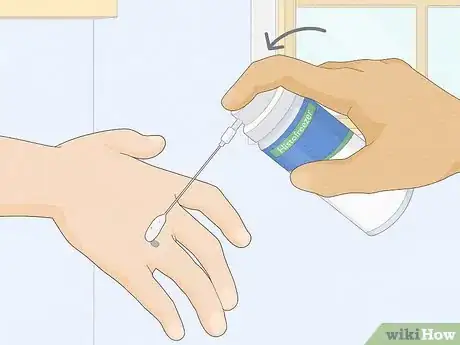
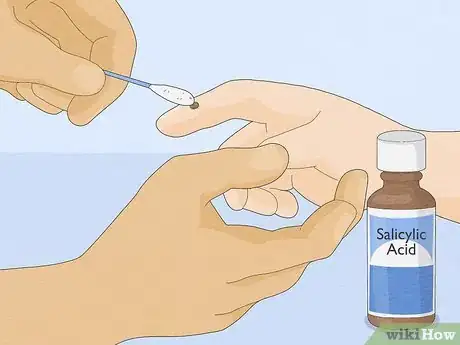
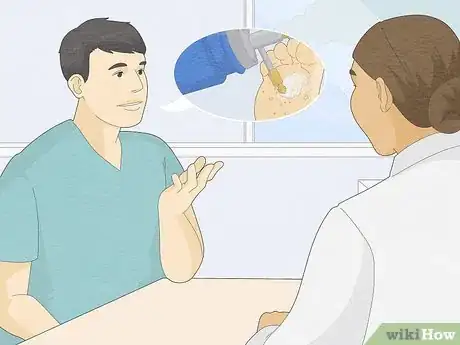

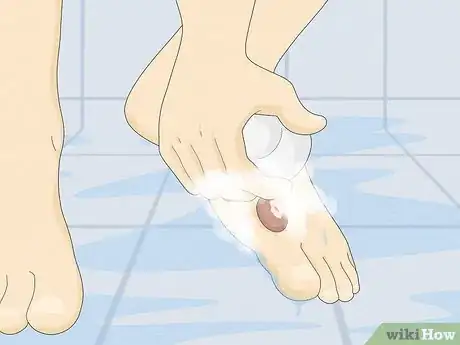

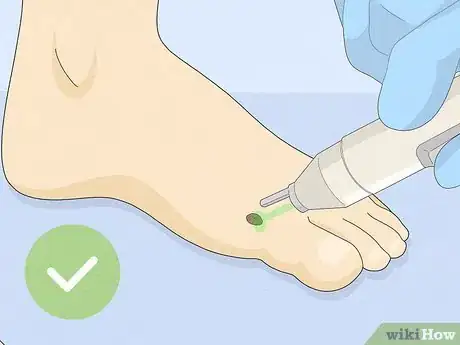
-Step-17.webp)
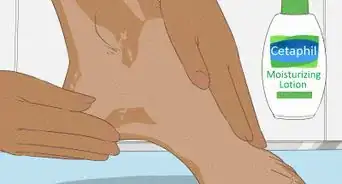
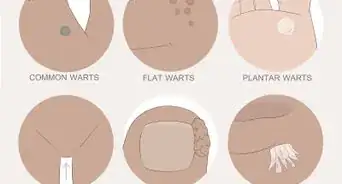

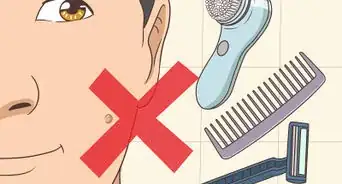
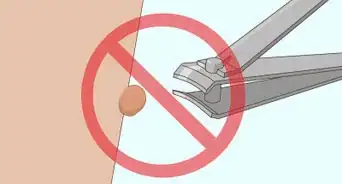

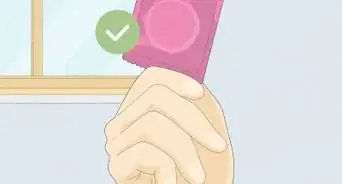
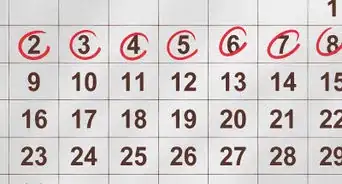
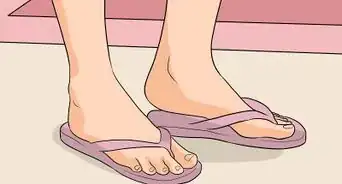

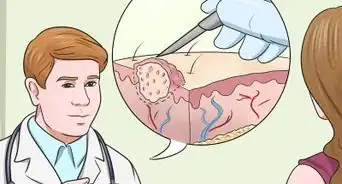
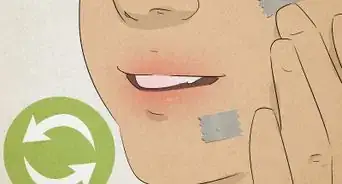










-Step-17.webp)
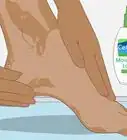
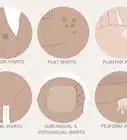
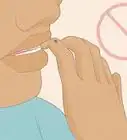



































Medical Disclaimer
The content of this article is not intended to be a substitute for professional medical advice, examination, diagnosis, or treatment. You should always contact your doctor or other qualified healthcare professional before starting, changing, or stopping any kind of health treatment.
Read More...